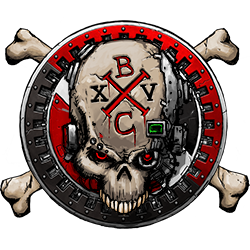Search the Community
Showing results for tags 'resource link'.
-
I love precision. When I paint my models, I want to know they are 100% codex, while still being distinctly my own models. So it drives me crazy that we know so little about GK heraldry. This post (and probably the next couple) is aimed at explaining the system I have come up with for making consistent and fluffy coats of arms. Heraldry Generally Before we can consider the consistent use of heraldry in the context of Grey Knights, we first need to understand the rules of heraldry. Not all of them of course, but we do need to know how a coat of arms is made up. Colours First of all, there are two basic kinds of colours in heraldry: tinctures and ores. Ores are the metal colours; yellow (gold) and white (silver). These are not actually metal paints, as there was no such thing, but rather the colours that were thought to represent the metals. Tinctures are the colours blue, red, purple, green and black. For completeness I will mention that these colours are all traditionally referred to by their Latin names in heraldry, but we can dispense with that for our purposes; we seek understanding, not fluency. There is also a third kind of “colour�? called a fur, but it is more of a pattern than a colour, and on models of the size we paint, the patterns are too small for any but the most skilled painters (ie, not me). If you have incredible brush control PM me and I’ll tell you all about it. A well done fur would look amazing. The important thing to remember about the colours is that a metal must NEVER be next to another metal, and a tint must NEVER be next to a tint. This is called the rule of tincture, and the reason for the rule is very simple: from a distance (or under poor visibility conditions generally) tints blur into each other, as do metals. But the contrast of a metal next to a tint allows for easy recognition at a distance. This was pretty important in battle, where you did not have time to squint at a person approaching you to determine if he was friend or foe. For our purposes this rule is very useful, because following it helps us create highly visible coats of arms on our small models. The Field The background of the shield is called the field. It can be plain, or it can be divided. The most common divisions (again, skipping the Latin) are “in two, vertically�?, “in two, horizontally�?, “in two, diagonally, from the upper right�?’ in two, diagonally, from the upper left�?, “in four, as a cross�?, “in four, as an X�?, “in three, as a Y�?, and “in two, as a chevron�?. This means that a basic description of a coat of arms might begin with “a red and silver field, divided in two, vertically�?. The division need not be a straight line. It could be a wavy, jagged, indented, etc. Again, however, I find that the level of brush control required makes a straight division easiest. The Ordinary An ordinary is a strong, simple shape that may overlay the field. The most common ordinaries are the “line(s) diagonal�?, “cross�?, “X�?, “chevron(s)�? (ie, V), “line(s) horizontal�?, and “line(s) vertical�?. Ordinaries typically extend across the whole field. There are in fact “sub-ordinaries�?, which occur within divisions of the field, rather than across the whole. So an example of a coat of arms up to this point might be, “a red field with two gold vertical gold lines in the ordinary�?. Or perhaps, “a red and blue field divided in four, cross-wise, by a silver ordinary�?. Notice in our last example that the ordinary allows us to use a two tone field that would normally be prohibited by the rule of tincture. The Charge The charge is quite simply the name for any shape or image that is imposed over the field and/or ordinary. They can be as simple as a heart shape to as complex and detailed as a roaring lion. Your painting skill is the limit here. The important thing about the charge is that it is exempt from the rule of tincture, so you can have that blood red lion on your green field if you want it! A completed (and very simple) coat of arms might be, "A red and blue field divided in four, cross-wise, by a silver ordinary. On each red field, a black arrow, and on each blue field, a gold eagle�?. Up next... what this means for Grey Knights! -Silent Requiem
